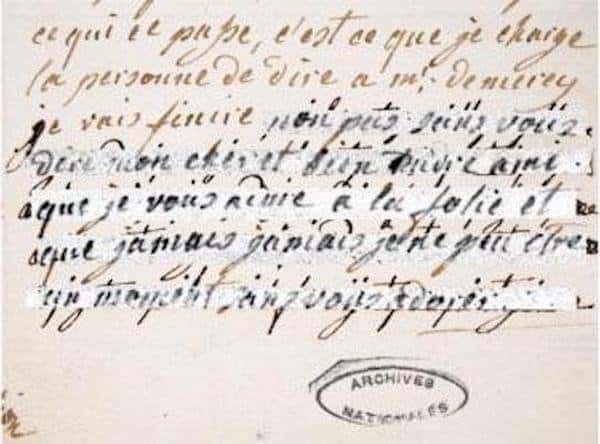Technology applied to archeology intrigues me a lot: it is not projected towards the future but towards the past: yet, from these "new" discoveries about antiquity we always emerge richer in greater knowledge.
Forensic genetics, X-rays and mass spectrography have worked miracles in recent years: they have "read" gods papyri of Herculaneum, decrypted the Mesopotamian cuneiform writing, “opened” and read letters of the Renaissance which otherwise would have remained closed, rebuilt i faces of ancient Egyptian mummies and so on. Today, they reveal to us a glimpse of "love" life that concerns a real star of the past: Marie Antoinette.
Those who watched “Lady Oscar” in their youth will know these historical characters well. When Marie Antoinette, future queen of France, was preparing to marry King Louis XVI, her heart was stolen by another. She sent very personal messages to Axel von Fersen, a Swedish nobleman.
Some of his letters, now largely in the French National Library, were probably censored by an official who could cover a few words.

Peek at the heart mail of the Queen of France
Today, researchers are able to decipher communications that have been preserved for centuries. As reported by Smithsonian Magazine, scientists at the French National Museum of Natural History have discovered a method, which document in a study. This method could be used to uncover countless historical documents and even analyze fossils.
Despite the dangers of sending each other love letters, it seemed that Marie Antoinette and the Count of Fersen couldn't stop writing to each other. Being too cautious, the Queen was annoyed by having to send her messages in her own code, and worried about making mistakes.
The letters that Marie Antoinette wrote to her lover were censored because they contained information about the political situation in France, and then… yes, in fact also because the Queen of France was actually writing love letters to someone who was not her husband.
The rediscovery of Marie Antoinette's correspondence
Some of Fersen's letters were purchased by the family from the French National Archives in 1982, although the researchers were unable to read the ink-covered parts. The team examined its chemical composition using a X-ray fluorescence spectroscopy, which produces unique fluorescent “fingerprints” for each ink used.
Knowing what the components of the ink are, they were able to develop algorithms that would maximize the difference between the various inks present on the letters between Fersen and Marie Antoinette: that of the original writing and that of the erasures.
Using this method, the royal team found that some of the queen's letters to her cousin were written in the same ink. The same ink was also used by the censor, who points to Fersen as the mysterious author of their correspondence.

What do the deleted parts say?
Despite the fact that there is no explicit mention of a physical relationship within the letters, many take the notes as evidence of a love story that spanned several countries. It is also significant that Fersen deleted words like “loved,” “tender friend,” and “love,” alluding to her desire to keep their relationship a secret. “The omitted steps they are the most intimate ones of the correspondence between him and Marie Antoinette,” he says Anne Michelin, a researcher on the team.
“Fersen probably wanted it preserve this correspondence, important to him perhaps for sentimental reasons or political strategies, protecting the queen's honor and perhaps his own".
Anne Michelin


